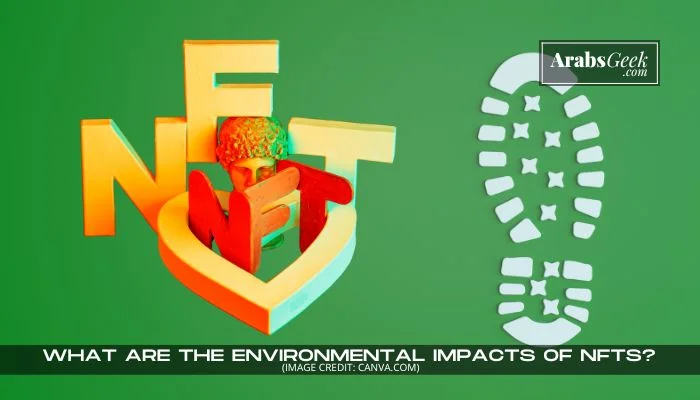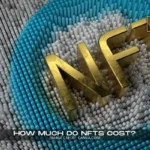What are the environmental impacts of NFTs? In today’s digital era, Non-Fungible Tokens (NFTs) have emerged as a groundbreaking phenomenon, captivating the worlds of art, technology, and finance. However, beneath the veneer of their unique digital ownership and the booming marketplace lies a less discussed but critical aspect – their environmental impacts. As NFTs continue to gain traction, it’s imperative to turn the lens towards their ecological footprint. These digital assets, reliant on blockchain technology, bring to the forefront pressing questions about energy consumption and sustainability.
The process of creating, buying, and selling NFTs is not just a transaction of art or assets; it’s interwoven with significant environmental considerations, primarily due to the energy-intensive nature of blockchain networks. This exploration into the environmental impacts of NFTs is not merely about casting a shadow on their innovation but about fostering a deeper understanding and consciousness of how emerging technologies interact with our environment.
As we delve into the intricate relationship between NFTs and the environment, it’s crucial to balance the scales between technological advancement and ecological responsibility, aiming to pave the way for sustainable practices in the burgeoning digital frontier.
Table of Contents
Understanding NFTs and Their Environmental Footprint | What are the environmental impacts of NFTs?
Non-Fungible Tokens (NFTs) are unique digital assets verified using blockchain technology, primarily Ethereum. Each NFT represents ownership of a specific item, often digital art. However, the process of minting, buying, and selling NFTs can have significant environmental impacts.
Energy Consumption of Blockchain Technology
- Proof of Work (PoW) Mechanism: Ethereum, the primary blockchain for NFTs, currently uses a PoW consensus mechanism, which requires massive computational power and, consequently, substantial energy use.
- Carbon Footprint: The energy used in these processes often comes from non-renewable sources, leading to high carbon emissions. Studies have shown that the carbon footprint of a single Ethereum transaction can be equivalent to that of several days of power consumption by an average U.S. household.
Impact on Climate Change
- Global Energy Demand: The increasing popularity of NFTs contributes to the rising energy demand of blockchain networks, exacerbating their environmental impact in terms of greenhouse gas emissions.
- Contribution to Climate Change: The reliance on fossil fuels for energy-intensive blockchain operations furthers the contribution to climate change, raising concerns about the sustainability of NFTs and similar technologies.
- Unlock Exclusive Financial Insights! Click Over to EntrepreneursPilot.com Now!
- Unlock a Treasure Trove of Must-Read Finance Articles! Click Here to Dive into Our Homepage’s Wealth of Knowledge!
- Unlock Exclusive Business Opportunities! 🚀 Connect with Us Now at [email protected]!
Efforts to Reduce Environmental Impact
- Transition to Proof of Stake (PoS): Ethereum plans to move to a PoS consensus mechanism, which is significantly less energy-intensive than PoW. This transition could drastically reduce the environmental impact of NFT transactions.
- Renewable Energy Sources: Some blockchain networks and NFT platforms are exploring the use of renewable energy sources to power their operations, aiming to reduce carbon emissions.
- Eco-Friendly Blockchain Alternatives: There is a growing interest in developing and utilizing more energy-efficient blockchains for NFT transactions to mitigate environmental concerns.
The Debate Around NFTs and Sustainability
- Criticism from Environmentalists: Many environmental activists and organizations have raised concerns about the unsustainable nature of current NFT practices due to their high energy consumption and carbon footprint.
- Response from the NFT Community: Some artists and collectors argue that the benefits of NFTs, such as democratizing art and providing new revenue streams, should be weighed against their environmental costs. Others advocate for more sustainable practices within the industry.
The Broader Context of Digital Technologies and Environment
- Comparison with Traditional Art Industries: Some proponents of NFTs point out that traditional art industries also have environmental impacts, such as the production and transportation of physical artworks.
- The Role of Technology in Environmental Sustainability: The discussion around NFTs highlights the broader challenge of integrating emerging technologies with environmental sustainability, emphasizing the need for green innovation in the tech industry.
Conclusion | What are the environmental impacts of NFTs?
The environmental impacts of NFTs are a complex and evolving issue. As this digital phenomenon continues to grow, it is crucial for creators, consumers, and the technology community to consider and address these environmental concerns. Balancing innovation with sustainability will be key to ensuring that NFTs can be part of a future that values both technological advancement and ecological preservation.
FAQ Section | What are the environmental impacts of NFTs?
Q1: Are all NFTs equally harmful to the environment?
A: The environmental impact varies based on the blockchain used. NFTs on blockchains with PoW consensus mechanisms generally have a higher impact than those on more energy-efficient networks.
Q2: Can NFTs ever be environmentally sustainable?
A: With the ongoing development of more energy-efficient blockchain technologies and the growing use of renewable energy sources, NFTs have the potential to become more environmentally sustainable.
Q3: What can consumers do to support sustainable NFT practices?
A: Consumers can support artists and platforms that prioritize sustainability, advocate for the use of energy-efficient blockchains, and stay informed about the environmental impacts of their digital asset investments.
Q4: How does the environmental impact of NFTs compare to other digital activities?
A: While NFTs can be energy-intensive, other digital activities like streaming and cloud computing also consume significant amounts of energy. The key difference lies in the continuous and intensive computational process required for NFT transactions on PoW blockchains.











